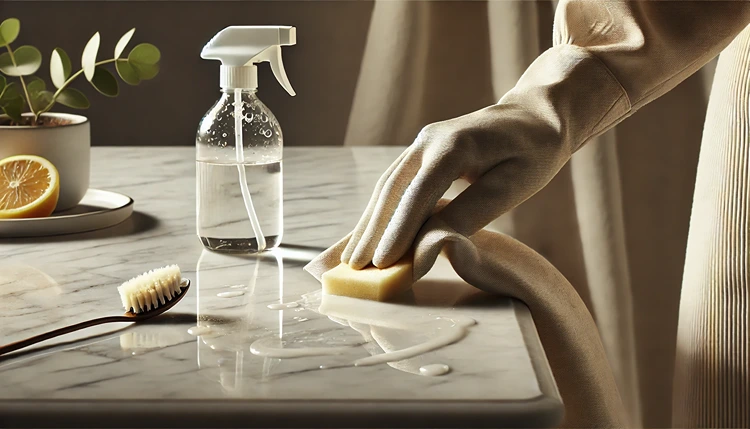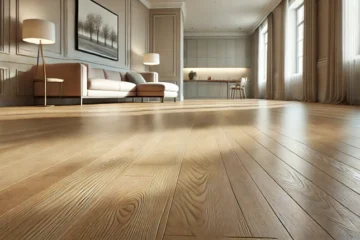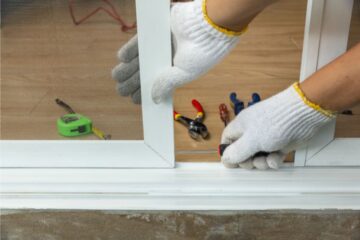Safe Techniques for Removing Super Glue from Marble Counters

Marble countertops are a beautiful addition to any home, providing a natural, elegant touch that many people love. However, marble is a porous material, and if you accidentally get super glue on it, the task of removing it can feel daunting. Super glue is designed to bond quickly and strongly, which can spell trouble for delicate surfaces like marble. The good news is that there are safe and effective techniques to remove super glue from marble counters without causing damage. Let’s walk through these methods step by step, so you can protect your countertops and keep them looking pristine.
What Should You Do First When Super Glue Spills on Marble?
The moment you realize super glue has touched your marble surface, it’s crucial to act swiftly. Fresh glue is far easier to deal with than dried glue, so try to remove it as soon as possible. But what’s the best way to start without making things worse?
Here’s your first step:
- Don’t panic. Acting too quickly without a plan might cause more harm than good.
- Avoid using any sharp tools. Scratching the marble with knives or metal tools is a quick way to permanently damage the surface.
- If the glue is still wet, use a paper towel or soft cloth to gently blot it. Do not rub it, as this could spread the glue over a larger area.
If the glue is already dry, don’t worry. There are still ways to tackle the issue, but keep in mind that marble requires gentle handling.
Is Acetone Safe to Use on Marble Countertops?
One of the most common methods people use for removing super glue is acetone. You’ll find acetone in nail polish remover, and while it’s effective on glue, using it on marble comes with risks. Acetone can potentially discolor marble or make the surface appear dull if used in excess.
Here’s how to use acetone safely on marble:
- Always test in a hidden area first. Dab a small amount of acetone on a soft cloth and gently apply it to an inconspicuous part of the counter.
- If there’s no discoloration after 10 minutes, you can proceed with caution on the glue spot.
- Use a cotton swab dipped in acetone and gently apply it to the dried glue. Let it sit for a few seconds.
- With a soft cloth, gently rub the area in circular motions to lift the glue. Never use abrasive materials like scouring pads.
- After the glue is removed, wipe the area with a damp cloth to neutralize the acetone and avoid further exposure to the marble.
Helpful Hint:
When using acetone, always work in a well-ventilated area, and be sure to wear gloves to protect your skin. Prolonged exposure to acetone can dry out your hands.
Can Vinegar Help Remove Super Glue from Marble?
If you prefer a more natural approach, vinegar can be a helpful alternative for breaking down super glue. While it’s not as strong as acetone, vinegar is less likely to harm your marble surface and works well for minor glue spills.
Here’s how to use vinegar safely:
- Soak a soft cloth in white vinegar.
- Place the cloth over the super glue spot and let it sit for 5–10 minutes to soften the glue.
- Gently rub the glue with the cloth in small circles.
- Rinse the area with a damp cloth and dry it thoroughly.
Helpful Hint:
If the vinegar method doesn’t fully remove the glue, you can try repeating the process. Just remember to avoid excessive rubbing to prevent damaging the marble’s finish.
Is a Plastic Scraper a Safe Option for Super Glue on Marble?
Sometimes, when glue has hardened, you may need to scrape it off. However, using metal or abrasive tools can leave scratches on your marble countertop. This is where plastic scrapers come in handy. They provide enough pressure to lift the glue without damaging the surface.
Here’s the safe way to use a plastic scraper:
- Hold the scraper at a 45-degree angle to the countertop and gently slide it under the edge of the glue.
- Apply even, gentle pressure. Avoid gouging the marble by keeping the scraper’s edge flat against the surface.
- If the glue is stubborn, pair the scraper with the vinegar or acetone method for added effectiveness.
- Once the glue is removed, clean the area with a damp cloth.
Helpful Hint:
For best results, use a dedicated plastic scraper designed for delicate surfaces. Kitchen spatulas or similar tools can be too thick or hard, which could scratch the marble.
What to Do If Super Glue Has Stained Your Marble?
In some cases, super glue may leave behind a faint stain or discoloration, even after removal. Marble, being a porous stone, can absorb some of the glue’s components. Here’s how you can tackle that:
- Mix a gentle marble cleaner with warm water.
- Using a soft cloth, gently buff the stained area. Avoid harsh chemicals as they can further damage the marble.
- For persistent stains, consider making a baking soda poultice (mix baking soda with water to form a paste) and apply it over the stain. Cover it with plastic wrap and leave it overnight.
- Rinse the area in the morning and dry it. If the stain remains, repeat the process.
Removing super glue stains from marble might take time and patience, but with careful handling, you can restore your countertop to its original beauty.
Stats:
According to industry data, natural stone surfaces like marble can absorb liquids quickly, which is why cleaning up super glue immediately is crucial for preventing permanent stains.
How to Protect Marble Countertops from Future Glue Spills
Once you’ve successfully removed the super glue, it’s a good idea to think about ways to protect your marble countertops from future mishaps. Prevention is key to maintaining your marble’s beauty and avoiding the stress of removing tough substances.
- Always cover your counters when using strong adhesives. Use plastic sheets or newspapers to catch any accidental drips.
- Use coasters, trays, and cutting boards to protect your countertops during craft projects or repairs.
- Seal your marble counters regularly. A good sealant can add an extra layer of protection, making it harder for liquids and sticky substances to penetrate the stone.
Regular maintenance and careful planning can go a long way in ensuring that your marble countertops stay looking as good as new for years to come.
What Should You Avoid When Removing Super Glue from Marble?
While it’s essential to know the right techniques to remove super glue from marble, it’s equally important to know what not to do. Marble is delicate, and using the wrong products or methods can cause irreversible damage. Below are some of the common mistakes to avoid when handling super glue spills on marble countertops.
- Avoid using metal tools: Scraping with metal tools like knives or razor blades can leave deep scratches on the marble surface. Always opt for plastic scrapers or a soft cloth.
- Don’t use harsh chemicals: Acidic cleaners, including lemon juice, vinegar (in large amounts), and commercial cleaners that aren’t designed for marble, can etch or dull the marble surface.
- Avoid excessive rubbing: Rubbing too hard, even with a soft cloth, can erode the polished finish of your marble. Gentle motions are always best when dealing with marble.
- Do not use heat: Some people recommend heating glue to soften it, but applying heat to marble can cause thermal shock, leading to cracks or discoloration.
Understanding what to avoid ensures that your efforts to remove the glue don’t lead to a bigger problem, like permanent surface damage or the need for professional repairs.
How to Handle Large Glue Spills on Marble
If you’ve spilled a significant amount of super glue on your marble countertop, the process can be more complex. Large spills harden quickly, and if left untreated, they can form thick layers that bond strongly to the marble. In these cases, multiple techniques may be necessary.
- Start by blotting the excess glue: If the glue is still wet, use a soft cloth or paper towel to blot the area gently. Do not spread the glue further.
- Apply acetone in stages: For large spills, acetone can be applied in small, controlled amounts. Work in sections to avoid overexposure to any one part of the marble.
- Use a plastic scraper for thick layers: Once the acetone has softened the glue, use a plastic scraper to gently lift off the glue in chunks. Take your time to avoid scratching the marble.
- Follow up with vinegar or marble cleaner: After removing the bulk of the glue, clean the area with vinegar or a gentle marble cleaner to remove any residue.
Helpful Hint:
If you’re dealing with a large, dried glue spill, don’t try to tackle it all at once. Break the task down into smaller sections, cleaning each one carefully to avoid damaging the surrounding marble.
Quick Comparison of Glue Removal Methods
| Method | Effectiveness | Risk Level | Best For |
|---|---|---|---|
| Acetone | High | Moderate (Risk of Discoloration) | Hardened, stubborn glue |
| Vinegar | Moderate | Low (Safe for Marble) | Fresh or small glue spills |
| Plastic Scraper | Moderate | Low (If used gently) | Large, hardened spills |
| Marble Cleaner | Low | Very Low | Finishing touch after glue removal |
When Should You Call a Professional?
Sometimes, even after trying multiple safe techniques, you might find that the super glue won’t budge or that there’s been damage to your marble surface. In these cases, it’s better to call in a professional than to risk further harm to your countertop. But when should you make the call?
- If the glue has been on the marble for a long time: Over time, super glue can seep into the porous surface of the marble, making it more difficult to remove with at-home methods.
- If there’s visible discoloration or etching: If you notice that the glue has stained the marble or if the surface looks dull after attempting to remove it, a professional stone cleaner or restorer can help restore the shine.
- If you’re dealing with a high-value marble piece: For rare or expensive marble, it’s always a good idea to consult a professional to avoid the risk of causing costly damage.
While most glue spills can be handled at home with patience and the right tools, some situations require the expertise of a stone specialist to ensure your marble remains in top condition.
How to Prevent Super Glue from Sticking to Marble in the Future
Prevention is always the best strategy when dealing with sensitive materials like marble. To avoid the stress of removing super glue spills in the future, you can take a few simple precautions when working with adhesives near your marble surfaces.
- Use protective coverings: When working with super glue or other adhesives, place a protective layer like a plastic sheet, newspaper, or an old towel over the marble surface.
- Apply glue away from the countertop: If possible, use super glue in a different area, like a garage or workbench, where you don’t have to worry about spills on delicate surfaces.
- Wear gloves and use a tray: When working with glue, wear protective gloves to avoid accidental drips and use a small tray or dish to hold your glue bottle to catch any excess before it reaches your countertop.
- Seal your marble countertops: Sealing your marble surfaces can make them more resistant to stains and spills, including super glue. A sealant acts as a barrier, giving you more time to clean up before the glue bonds with the surface.
These simple precautions can save you time, effort, and the potential heartache of a damaged marble countertop.
Stats:
Studies show that a properly sealed marble surface can repel up to 80% more stains and spills compared to unsealed marble, reducing the risk of permanent damage from substances like super glue.
Different Glue Removal Techniques
This section can fit after the “How to Protect Marble Countertops from Future Glue Spills” subheading. It will provide a clear, easy-to-understand comparison of the various glue removal techniques covered in the article.
Pros
- Using acetone effectively softens hardened glue without too much effort.
- Vinegar is a natural, safer option for mild glue stains.
- Plastic scrapers can lift glue without scratching the marble surface.
- Sealing marble counters adds long-term protection against spills and stains.
- Preventive measures, such as using protective coverings, minimize the risk of future accidents.
Cons
- Acetone can cause discoloration if used incorrectly.
- Vinegar may not work as effectively on large or hardened glue spills.
- Plastic scrapers require caution to avoid applying too much pressure.
- Sealing marble requires regular maintenance and reapplication.
- Natural marble can still absorb some adhesives even with prevention efforts.
FAQs
Wrapping Up
Removing super glue from marble countertops may seem tricky at first, but with the right techniques, you can safely restore your marble without causing damage. Whether using acetone, vinegar, or a plastic scraper, the key is to act gently and avoid abrasive methods. Protecting your marble with sealants and taking preventive measures can save you the hassle of dealing with future glue spills. By understanding the dos and don’ts of marble care, you can ensure your countertops remain beautiful and functional for years to come.


